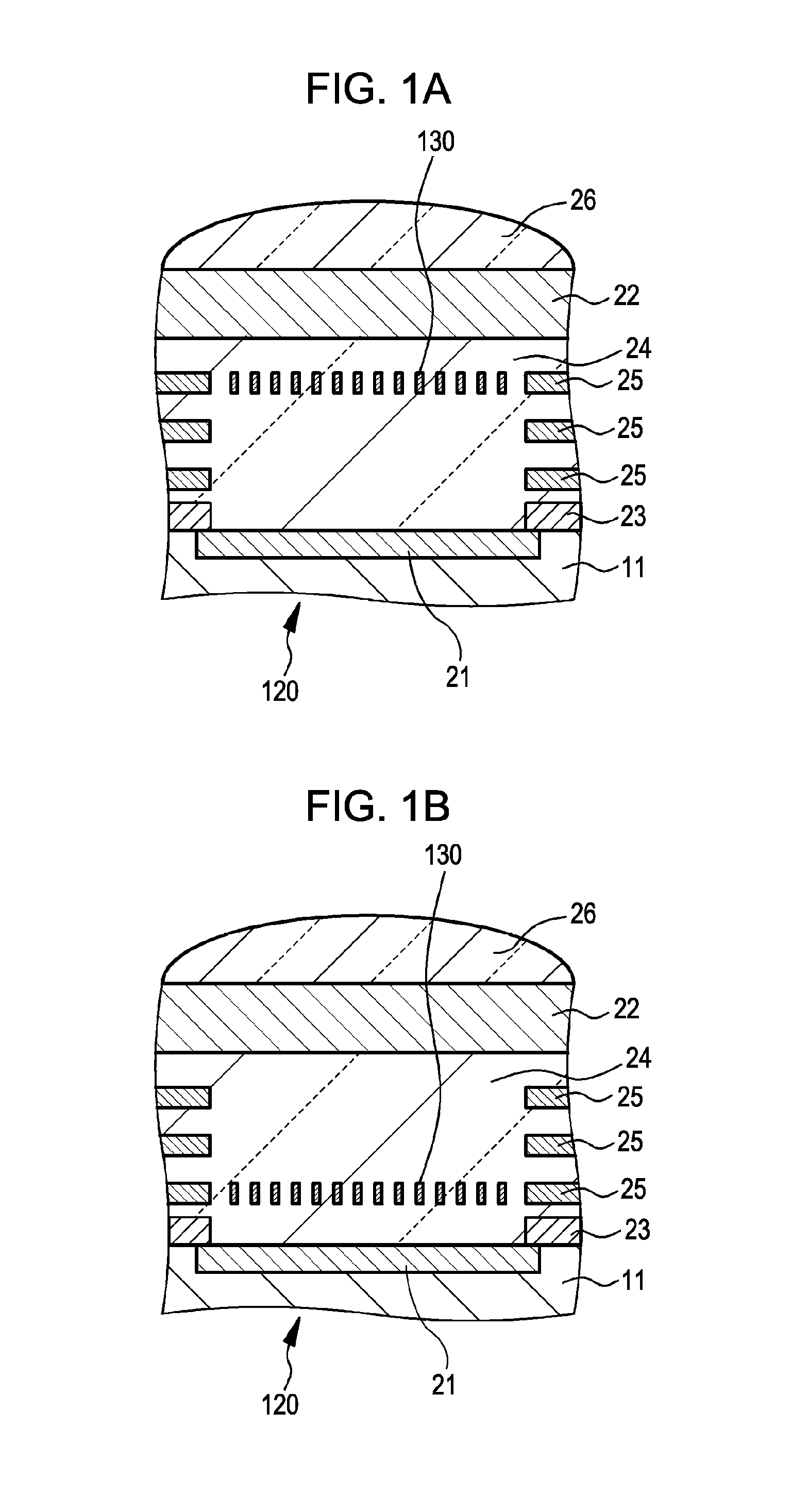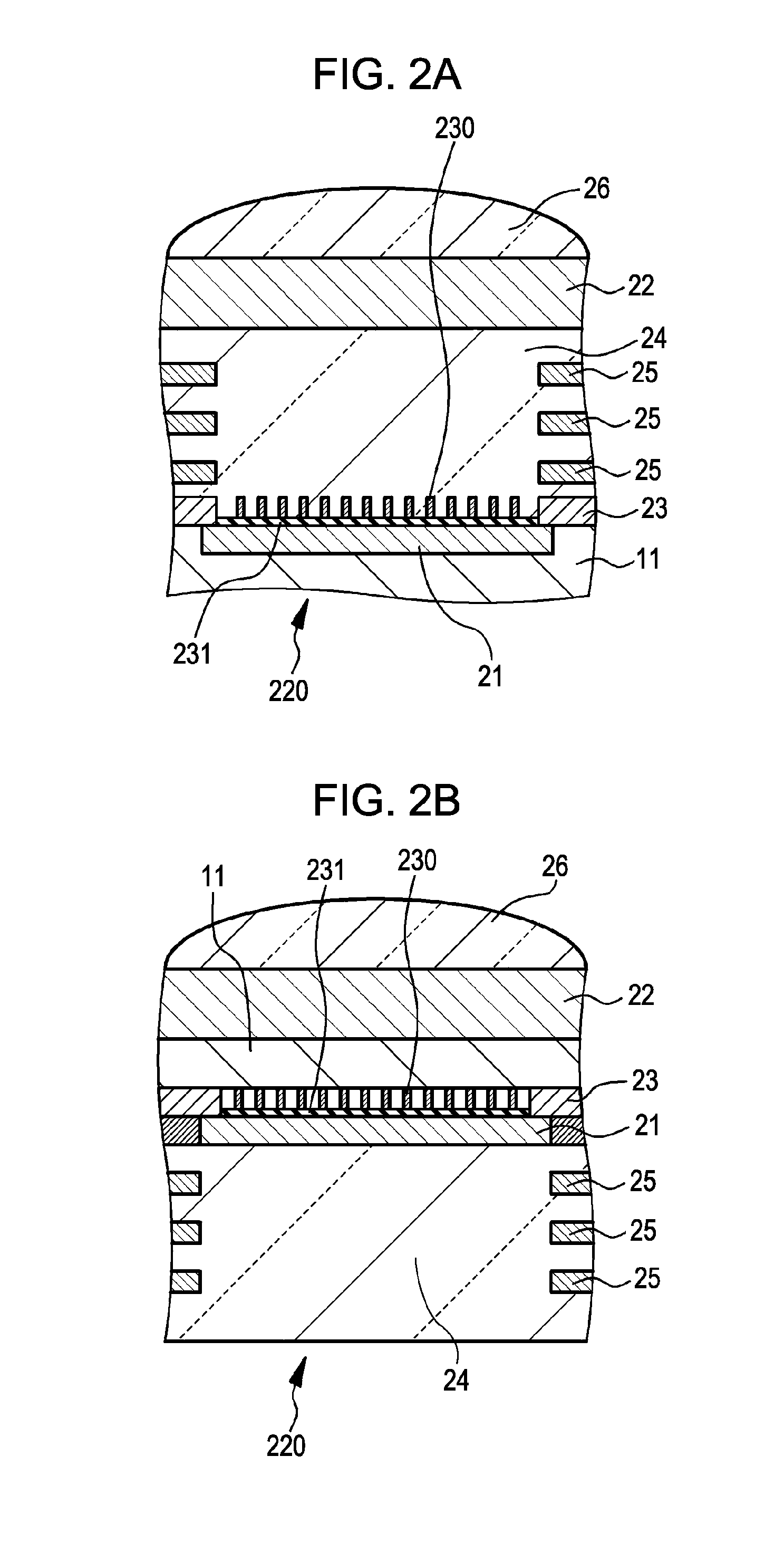Two-dimensional solid-state image capture device with polarization member and color filter for sub-pixel regions
a two-dimensional solid-state image and sub-pixel technology, applied in the direction of radiation controlled devices, optical radiation measurement, instruments, etc., can solve the problems of attenuation, sensitivity decrease due to attenuation, and difficulty in achieving the effect of reducing the manufacturing cost of the two-dimensional solid-state image capture devi
- Summary
- Abstract
- Description
- Claims
- Application Information
AI Technical Summary
Benefits of technology
Problems solved by technology
Method used
Image
Examples
first embodiment
[0062]A first embodiment relates to a two-dimensional solid-state image capture device according to a first mode and a fourth mode of the present invention and to a polarization-light data processing method for the two-dimensional solid-state image capture device according to the first mode of the present invention. FIGS. 1A and 1B show partial schematic cross-sectional views of the two-dimensional solid-state image capture device in the first embodiment, FIGS. 5 to 9 schematically show plan layout views of sub-pixel regions 120 in the first embodiment, and FIGS. 4A and 4B are partial plan views of a polarization member 130.
[0063]In a two-dimensional solid-state image capture device in the first embodiment or each of the second to fourth embodiments described below, multiple pixel areas are generally arranged in a two-dimensional matrix in an X direction and a Y direction and each pixel area is constituted by multiple (M0) sub-pixel regions 120, where M0=4 in the embodiment. Each su...
second embodiment
[0093]A second embodiment relates to a polarization-light data processing method for a two-dimensional solid-state image capture device according to a second mode of the present invention. The two-dimensional solid-state image capture device in the second embodiment may have the same configuration as the two-dimensional solid-state image capture device described above in the first embodiment, and thus, a detailed description is not given hereinafter.
[0094]The polarization-light data processing method for the two-dimensional solid-state image capture device in the second embodiment is a simplified one of the polarization-light data processing method for the two-dimensional solid-state image capture device in the first embodiment, thereby achieving a reduction in the amount of data processing. In the polarization-light data processing method for the two-dimensional solid-state image capture device in the second embodiment, Iq denotes the light intensity of light that is incident on th...
third embodiment
[0096]A third embodiment relates to the two-dimensional solid-state image capture device according to the second mode of the present invention. In the two-dimensional solid-state image capture device in the third embodiment, as shown in a schematic partial cross sectional view in FIG. 2A or 2B, a polarization member 230 is disposed at the light inside side of at least one of sub-pixel regions 220 constituting each pixel area. Each sub-pixel region has a light-shielding layer 23 for controlling (restricting) incidence of light on the photoelectric conversion element. The polarization member 230 and the light-shielding layer 23 are disposed on the same virtual plane. In this case, the polarization member 230 is a wire-grid polarization member and is made of, for example, aluminum (Al) or copper (Cu), and the light-shielding layer 23 is made of, for example, aluminum (Al) or tungsten (W).
[0097]The two-dimensional solid-state image capture device shown in FIG. 2A is a frontside-illumina...
PUM
| Property | Measurement | Unit |
|---|---|---|
| wavelengths | aaaaa | aaaaa |
| width WC | aaaaa | aaaaa |
| wavelengths λR | aaaaa | aaaaa |
Abstract
Description
Claims
Application Information
 Login to View More
Login to View More - R&D
- Intellectual Property
- Life Sciences
- Materials
- Tech Scout
- Unparalleled Data Quality
- Higher Quality Content
- 60% Fewer Hallucinations
Browse by: Latest US Patents, China's latest patents, Technical Efficacy Thesaurus, Application Domain, Technology Topic, Popular Technical Reports.
© 2025 PatSnap. All rights reserved.Legal|Privacy policy|Modern Slavery Act Transparency Statement|Sitemap|About US| Contact US: help@patsnap.com



